Jancarlo Ferreira Gomes
A Flyweight CNN with Adaptive Decoder for Schistosoma mansoni Egg Detection
Jun 26, 2023



Abstract:Schistosomiasis mansoni is an endemic parasitic disease in more than seventy countries, whose diagnosis is commonly performed by visually counting the parasite eggs in microscopy images of fecal samples. State-of-the-art (SOTA) object detection algorithms are based on heavyweight neural networks, unsuitable for automating the diagnosis in the laboratory routine. We circumvent the problem by presenting a flyweight Convolutional Neural Network (CNN) that weighs thousands of times less than SOTA object detectors. The kernels in our approach are learned layer-by-layer from attention regions indicated by user-drawn scribbles on very few training images. Representative kernels are visually identified and selected to improve performance with reduced computational cost. Another innovation is a single-layer adaptive decoder whose convolutional weights are automatically defined for each image on-the-fly. The experiments show that our CNN can outperform three SOTA baselines according to five measures, being also suitable for CPU execution in the laboratory routine, processing approximately four images a second for each available thread.
Semi-supervised deep learning based on label propagation in a 2D embedded space
Aug 02, 2020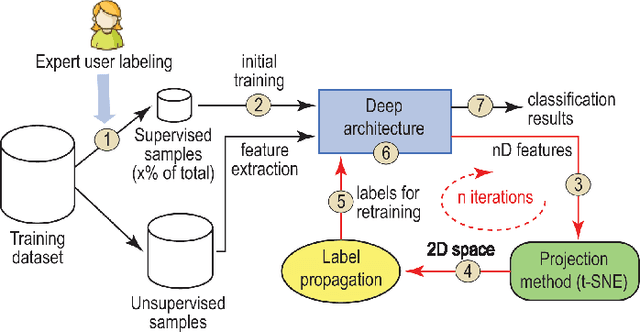
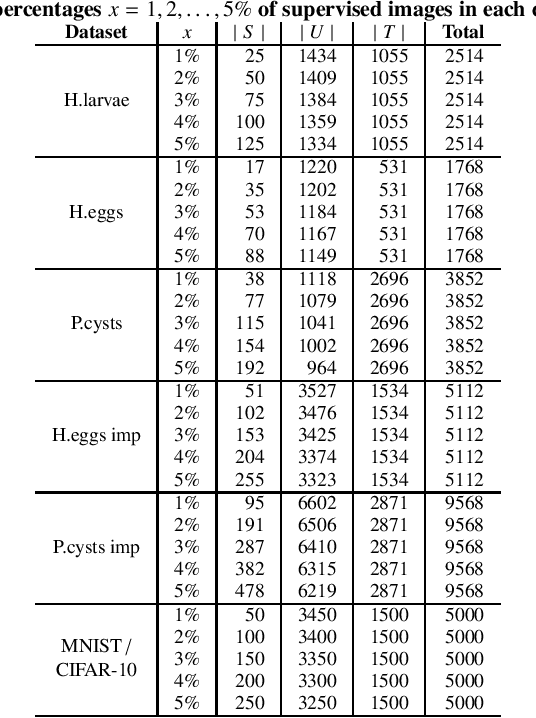
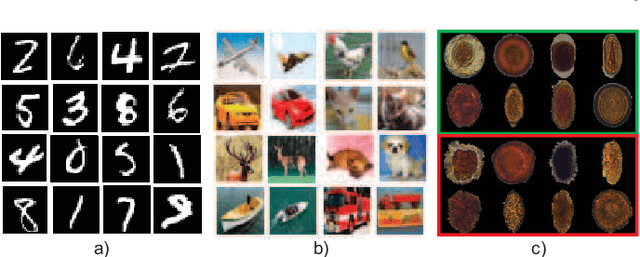
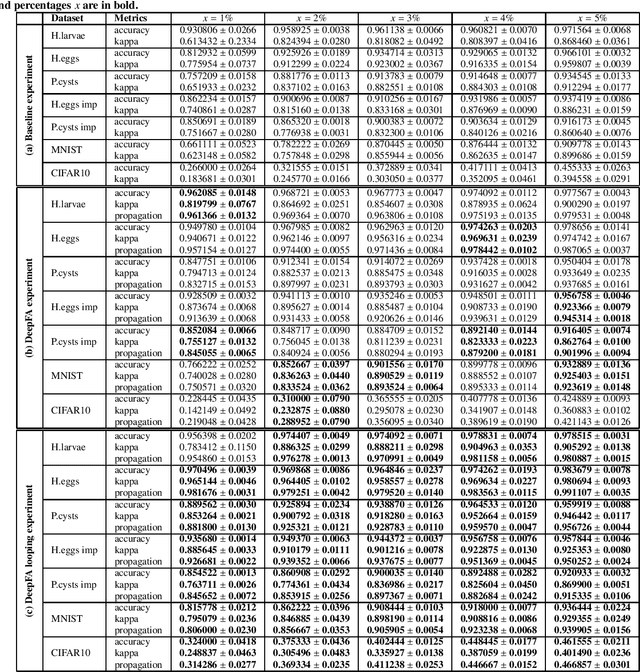
Abstract:While convolutional neural networks need large labeled sets for training images, expert human supervision of such datasets can be very laborious. Proposed solutions propagate labels from a small set of supervised images to a large set of unsupervised ones to obtain sufficient truly-and-artificially labeled samples to train a deep neural network model. Yet, such solutions need many supervised images for validation. We present a loop in which a deep neural network (VGG-16) is trained from a set with more correctly labeled samples along iterations, created by using t-SNE to project the features of its last max-pooling layer into a 2D embedded space in which labels are propagated using the Optimum-Path Forest semi-supervised classifier. As the labeled set improves along iterations, it improves the features of the neural network. We show that this can significantly improve classification results on test data (using only 1\% to 5\% of supervised samples) of three private challenging datasets and two public ones.
Semi-Automatic Data Annotation guided by Feature Space Projection
Jul 27, 2020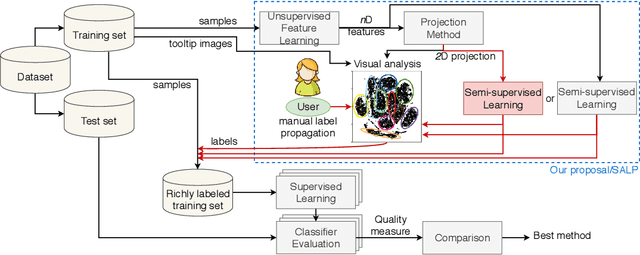
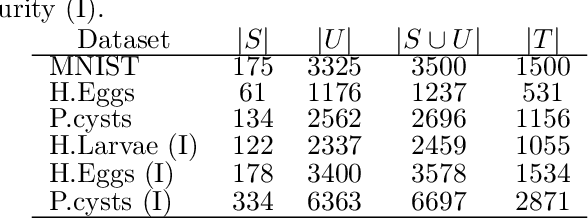
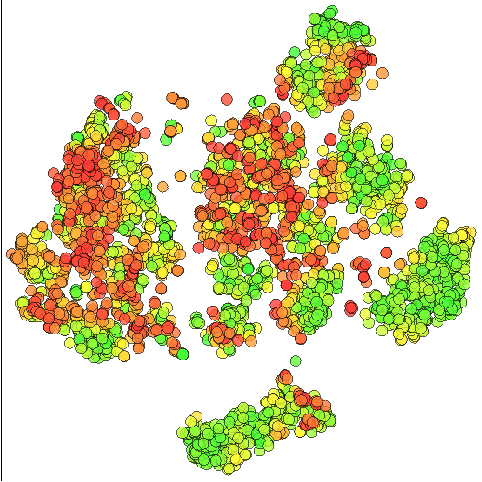
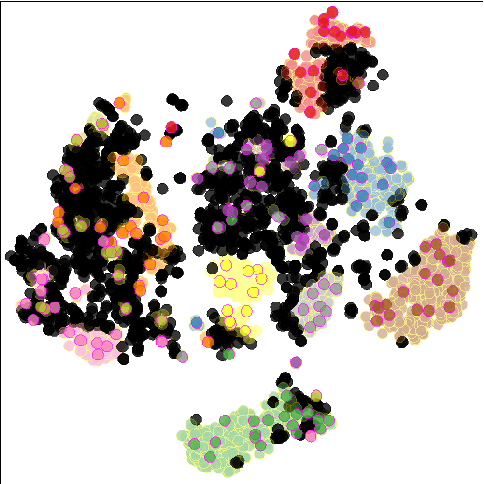
Abstract:Data annotation using visual inspection (supervision) of each training sample can be laborious. Interactive solutions alleviate this by helping experts propagate labels from a few supervised samples to unlabeled ones based solely on the visual analysis of their feature space projection (with no further sample supervision). We present a semi-automatic data annotation approach based on suitable feature space projection and semi-supervised label estimation. We validate our method on the popular MNIST dataset and on images of human intestinal parasites with and without fecal impurities, a large and diverse dataset that makes classification very hard. We evaluate two approaches for semi-supervised learning from the latent and projection spaces, to choose the one that best reduces user annotation effort and also increases classification accuracy on unseen data. Our results demonstrate the added-value of visual analytics tools that combine complementary abilities of humans and machines for more effective machine learning.
 Add to Chrome
Add to Chrome Add to Firefox
Add to Firefox Add to Edge
Add to Edge